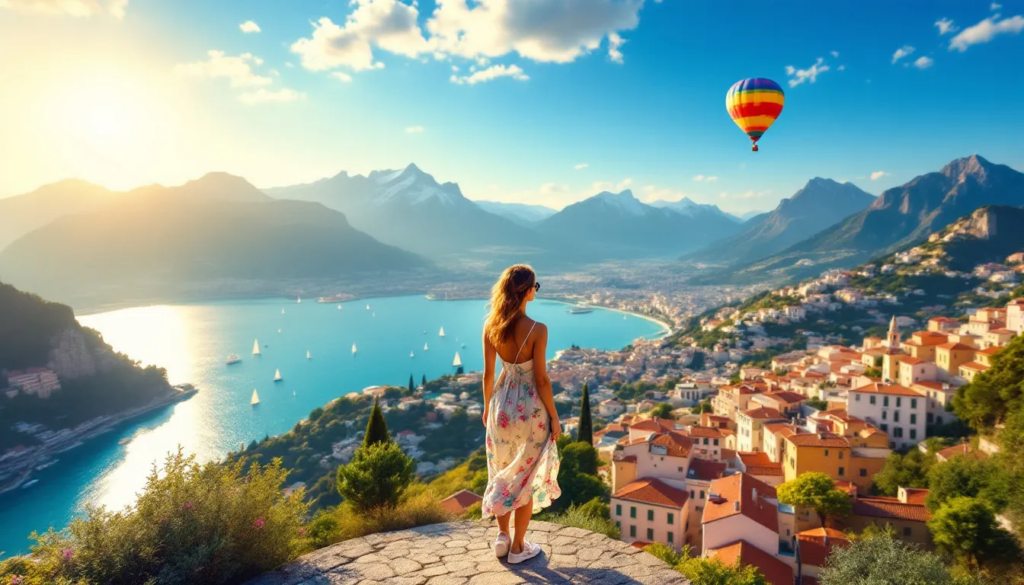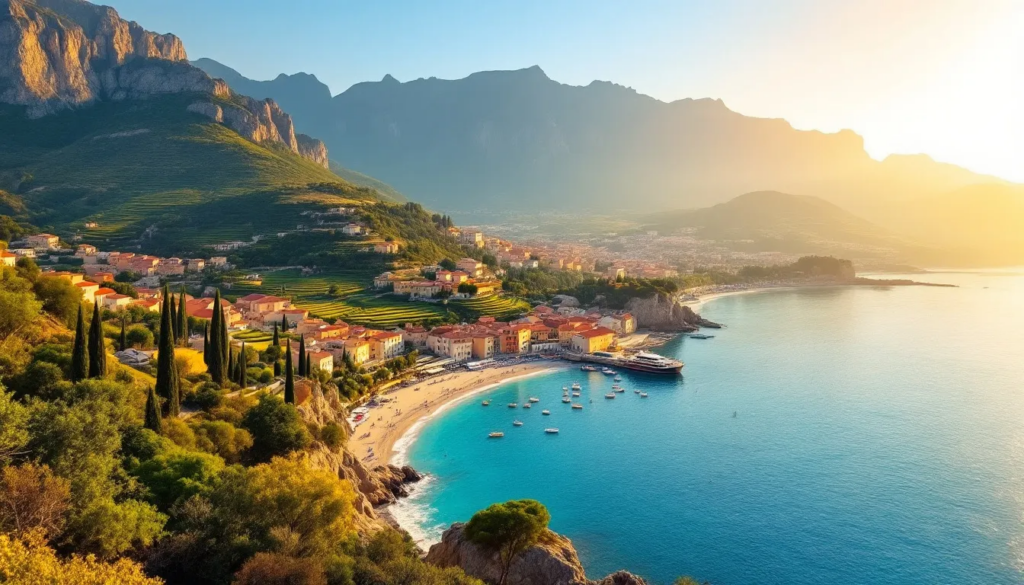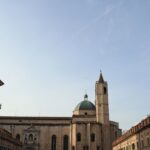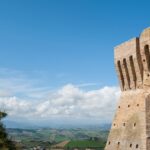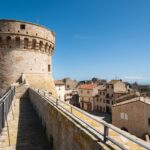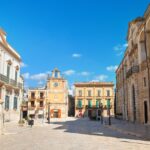An unforgettable trip to Italy doesn’t happen by chance; it’s the result of thoughtful planning, local insight, and a touch of spontaneity. With the right Italy travel planner, you can design a journey that captures the country’s beauty, showcasing the country’s diverse regions and experiences. Italy, as a country, offers a rich tapestry of culture, cuisine, and landscapes, making it one of Europe’s most popular travel destinations.
This guide will help you build your perfect itinerary step by step, balancing Italy’s famous landmarks with authentic, lesser-known experiences. Think of this planner as a course designed to maximize your travel experience, providing a structured approach to sightseeing and cultural immersion. By following this guide, you’ll be able to create a personalized Italy itinerary tailored to your interests and trip length. Whether you’re exploring the ancient streets of Rome, the art-filled corners of Florence, or the turquoise coves of Le Marche’s Conero Riviera Adventure, this plan ensures every moment feels effortless and full of meaning.
Step 1: Define Your Travel Style
Before booking flights or searching hotels, take time to define what kind of traveler you are. Italy offers something for everyone, from art lovers and food enthusiasts to outdoor explorers and relaxation seekers.
Your travel style determines everything: the pace, destinations, and experiences that make your trip uniquely yours.
Ask yourself:
- Are you drawn to history and architecture, or do you prefer nature and local life?
- Do you want to see iconic Italian cities, or would you rather discover small towns and hidden gems?
- How much structure do you enjoy in your day-to-day travel?
If you’re planning your first trip to Italy, it can feel overwhelming, but defining your travel style will help you focus and make the process easier.
By answering these questions, you’ll find it easier to prioritize. For instance, cultural travelers may focus on Rome, Florence, and Venice, while nature lovers might combine a few days in Tuscany with the rolling hills and seaside cliffs of Le Marche, whether you prefer a carefully planned itinerary or a more spontaneous approach.
Step 2: Choose the Right Regions for Your Itinerary
Italy is a patchwork of diverse regions, each with its own rhythm, cuisine, and landscape. From the rolling hills and lakes of northern Italy, known for its unique attractions and cultural highlights, to the sun-soaked coasts of the south, every area offers something special. A well-designed itinerary blends the highlights with the unexpected, and it’s recommended to spend several nights in each region, such as 3 nights in Rome or Florence, to truly experience what each destination has to offer.
Iconic Destinations for First-Time Visitors
- Rome: Home to the Colosseum, Roman Forum, Vatican Museums, Spanish Steps, Trevi Fountain, and St. Peter’s Basilica, must-see attractions for any visitor.
- Florence: The birthplace of the Renaissance, visit the Uffizi Gallery and walk along the Arno River.
- Venice: A city of canals and charm; explore the Rialto Bridge, Piazza San Marco, and the islands of Murano and Burano.
On your first day in Rome, consider visiting highlights like the Spanish Steps, Trevi Fountain, and St. Peter’s Basilica to get oriented and make the most of your arrival. These cities are must-sees, but they can be crowded. To make your trip truly special, balance them with quieter, authentic areas.
Hidden-Gem Regions Worth Adding
Le Marche remains one of Italy’s best-kept secrets. This region combines Adriatic beaches, medieval villages, and world-class cuisine without the crowds. It’s where you’ll find the Conero Riviera Adventure, a private sailing experience that blends nature and luxury on crystal-blue waters. For a unique Italian island experience, consider adding a visit to Capri, a picturesque island known for its glamorous waters, grottos, and upscale shopping, easily accessible by boat from the mainland.
Other underrated regions include Umbria’s hill towns, Abruzzo’s national parks, and Basilicata’s cave dwellings in Matera. These areas also offer distinctive shopping opportunities, from artisan crafts to local markets, enhancing your travel itinerary with authentic finds.
| Traveler Type | Recommended Regions | Ideal Duration |
|---|---|---|
| First-Timer | Rome, Florence, Venice | 7 – 10 days |
| Culture Seeker | Le Marche, Umbria | 8 – 12 days |
| Nature Lover | Dolomites, Le Marche Coast | 10 – 14 days |
| Culinary Traveler | Tuscany, Le Marche | 7 – 10 days |
Step 3: Set Your Budget and Organize Logistics
Budgeting early makes your trip smoother and helps you focus on what truly matters. Creating a detailed travel schedule is important to stay organized and make the most of your time in Italy. Italy offers incredible experiences across price ranges, but understanding averages will guide your choices. For better savings and convenience, we recommend purchasing tickets or passes for popular attractions and transportation in advance.
Average Daily Budget
| Category | Estimated Cost | Notes |
|---|---|---|
| Lodging | $120 – $250 | Boutique B&Bs in Le Marche offer high value |
| Dining | $60 – $100 | Regional menus often include wine |
| Transportation | $40 – $80 | Trains for cities, cars for the countryside |
| Tours & Activities | $100 – $250 | Private day-tours and local guides |
Getting Around
- Train: The easiest way to move between major cities. Italy’s high-speed routes (Rome–Florence–Venice) save both time and stress. When traveling by train, familiarize yourself with the train station layout, available services, and transfer tips to ensure smooth connections between destinations.
- Rental Car: Perfect for exploring regions like Le Marche, where charming towns and scenic drives dominate.
- Private Transfer: Ideal for travelers who prefer flexibility and comfort without driving. Private transfers are also convenient for planning same-day activities or transfers, maximizing your trip efficiency.
Travel Tip: In many city centers, you’ll encounter “ZTL” (restricted traffic zones). Park outside the area and take a taxi or walk to avoid fines.
Accommodation Options in Italy
Italy offers an incredible variety of accommodation options to match every travel style and budget. Whether you dream of waking up in a luxury hotel in the heart of Rome, a charming guesthouse in Florence, or a lakeside villa on Lake Como or Lake Garda, there’s a perfect place for you to stay. For those who want to be close to the action, choosing a hotel or apartment in the city center of iconic Italian cities like Venice or Florence means you’ll spend less time commuting and more time exploring. If your custom itineraries include a slower pace, consider agriturismos (farm stays) in the countryside or boutique hotels by the lakes, where you can unwind and soak in the scenery.
When planning your Italy trip, think about what matters most to you: proximity to museums and shops, a quiet retreat, or easy access to train stations for day trips. Many travelers find that booking accommodations in advance, especially during peak travel seasons, ensures the best selection and rates. Tailor your choices to your interests and the unique character of each city or region, and you’ll find your stay in Italy as memorable as the sights themselves.
Travel Documents and Visas
Before you set off on your dream trip to Italy, make sure your travel documents are in order. A valid passport is essential for any trip to Italy, and depending on your nationality, you may also need a visa. It’s important to check the latest entry requirements well in advance of your departure, as rules can change and processing times may vary. For added peace of mind, make photocopies of your passport, visa, and travel insurance documents, and keep them separate from the originals in case of loss or emergency.
Travel insurance is highly recommended for any trip to Italy, covering unexpected medical expenses, trip cancellations, or lost luggage. With careful planning and the right documents in hand, you can focus on enjoying every moment of your trip to Italy, knowing you’re prepared for whatever comes your way.
Packing and Preparation
Packing smartly for your Italy adventure means you’ll be ready for anything, whether you’re exploring the bustling streets of Rome, wandering through Florence’s museums, or hiking in the Italian Alps. In the summer, lightweight clothing, comfortable walking shoes, and sun protection are must-haves for city exploration. If your plans include visiting during the cooler months or heading to the mountains, pack warm layers and weather-appropriate gear.
Spring and autumn in Italy can bring unpredictable weather, so versatile layers are key. Don’t forget essentials like a universal power adapter, a money belt for security, and any medications you may need. If you’re planning to visit religious sites such as Vatican City or certain museums, be sure to pack clothing that covers shoulders and knees to respect local dress codes. With thoughtful preparation, you’ll be able to dive deeper into Italian culture and make the most of every day, no matter where your itinerary takes you.
Step 4: Add Local Experiences That Bring Italy to Life
What turns a good trip into a great one is immersion. The best Italy travel planners go beyond sightseeing; they weave in experiences that connect you to people, traditions, and local stories. As evening falls, you’ll notice how local restaurants fill with people, creating a lively and authentic atmosphere. Take time to sit in a piazza or at a cafe to soak up the local ambiance and truly experience Italian culture.
Private Tours and Cultural Excursions
Opt for smaller groups or private guides who can adapt your itinerary to your interests. These experiences reveal Italy’s authentic character while avoiding large crowds. True Colors of Italy specializes in private one-day excursions through Le Marche, blending comfort with genuine local engagement.
Authentic Activities to Include
- Cooking classes in historic villages
- Vineyard tours and wine pairing dinners
- Guided hikes in the Apennines
- Artisan workshops for ceramics or textiles
- Sailing along the Conero Coast
These moments foster connection and reflection, the essence of Italian travel.
Food and Wine in Italy
No trip to Italy is complete without indulging in its world-famous food and wine. Each region boasts its own specialties, think pizza in Naples, classic pasta dishes in Rome, and the robust wines of Tuscany. To truly savor the flavors of Italy, consider joining a guided tour or wine tasting, where you can learn about traditional production methods and sample local vintages straight from the source.
Dining out is an adventure in itself, with menus that change according to the season and the chef’s inspiration. Don’t hesitate to ask your server for recommendations or to try the house specialties. Whether you’re enjoying a leisurely meal in a family-run trattoria or sipping Chianti in a Tuscan vineyard, the food and wine of Italy are sure to be highlights of your journey.
Sustainable Tourism
Traveling responsibly in Italy means making choices that help preserve its beauty and culture for generations to come. Opt for eco-friendly accommodations, use public transportation, and explore cities and towns on foot or by bike whenever possible. Walking not only reduces your environmental impact but also allows you to discover hidden corners and local shops you might otherwise miss.
If you’re planning to visit popular destinations like the Amalfi Coast or Cinque Terre, consider traveling during the shoulder seasons to avoid large crowds and reduce strain on local resources. Joining a group tour or guided visit in sensitive areas can also help minimize your footprint while supporting the local economy. By embracing sustainable tourism practices, every traveler can play a part in protecting Italy’s unique landscapes and vibrant communities, ensuring that your visit leaves a positive legacy.
Step 5: Build Your Personalized Italy Itinerary
Now it’s time to turn ideas into a practical plan. Structure your days so you experience variety while leaving space for rest and discovery. A well-structured itinerary leads to a more enjoyable vacation.
Sample 7-Day Itinerary
| Day | Destination | Highlights |
|---|---|---|
| 1 | Arrive in Rome | Colosseum and Roman Forum tour |
| 2 | Rome → Le Marche | Scenic drive or train to the Adriatic coast |
| 3 | Le Marche | Conero Riviera Adventure |
| 4 | Le Marche | Local cuisine and wine experience |
| 5 | Florence | Uffizi Gallery and Arno River walk |
| 6 | Florence | Day trip to Chianti vineyards |
| 7 | Depart | Relaxed morning and flight home |
Planning Tips
- Limit your itinerary to three regions or fewer.
- Reserve museum tickets and train seats early.
- Use shoulder seasons (April – June or September – October) for pleasant weather and lighter crowds.
- Allow extra time in your schedule for sightseeing, transportation delays, or unexpected events like strikes or demonstrations.
- Plan your first day to recover from jet lag, especially after an international flight, so you can enjoy your trip from the start.
- Some experiences or festivals are available only at specific times of year; check ahead so you don’t miss out.
- Build your itinerary carefully to avoid missing key sights, hidden gems, or authentic local experiences.
Step 6: Expert Tips for a Stress-Free Journey
Even the most detailed itinerary benefits from small adjustments. These insights keep your trip smooth and memorable:
- Pack light: Many train stations lack elevators.
- Learn basic Italian: Locals appreciate simple greetings.
- Stay flexible: Allow room for spontaneous discoveries.
- Plan breaks: Include leisurely afternoons to recharge.
Italy rewards travelers who slow down and pay attention; the best stories often happen between destinations. Now, head to your next destination or step into your planning process to make the most of your journey.
Conclusion
Crafting your Italy itinerary is about more than logistics; it’s about creating moments that stay with you long after you return home. With the right Italy travel planner, you can blend world-famous cities with hidden gems like Le Marche, savor authentic food and culture, and travel at a pace that feels both enriching and relaxed. Whether you’re exploring ancient landmarks or sailing along the Conero Riviera, thoughtful planning allows you to experience Italy in its truest form: personal, beautiful, and unforgettable.
Ready to turn your Italy travel plans into a truly unforgettable journey? At True Colors of Italy, we craft private, all-inclusive day tours through the heart of Le Marche, where culture, cuisine, and nature come together beautifully. Whether you’re traveling solo, with a partner, or in a small group, our experiences are designed for those who seek authenticity and comfort. Contact us today to start planning your personalized Italian itinerary.
FAQs
What is the best way to plan an Italy trip?
Start by identifying what interests you most: art, food, or nature, then select 2–3 regions that reflect that. Organize transportation, accommodations, and tours around those priorities to keep your trip focused and enjoyable.
What is the best month to travel in Italy?
Spring (April to June) and fall (September to October) offer ideal temperatures and fewer crowds. Summer can be beautiful but hot and busy, especially in Rome and Florence.
What is the average cost for a week in Italy?
Budget about $2,500 – $3,500 per person for a 7-day trip, including lodging, meals, and transport. Smaller regions like Le Marche provide more value without sacrificing quality.
How do I get around Italy efficiently?
Use high-speed trains for city travel and rent a car for rural areas. Private drivers or small guided tours are great for custom routes and added comfort.
When should I start planning my Italy trip?
Book flights and accommodations at least three months in advance. Reserve private day tours and unique experiences six to eight weeks before departure to secure availability.


